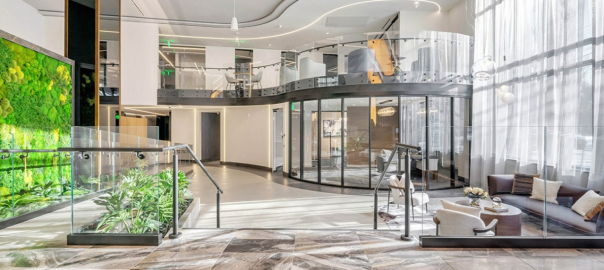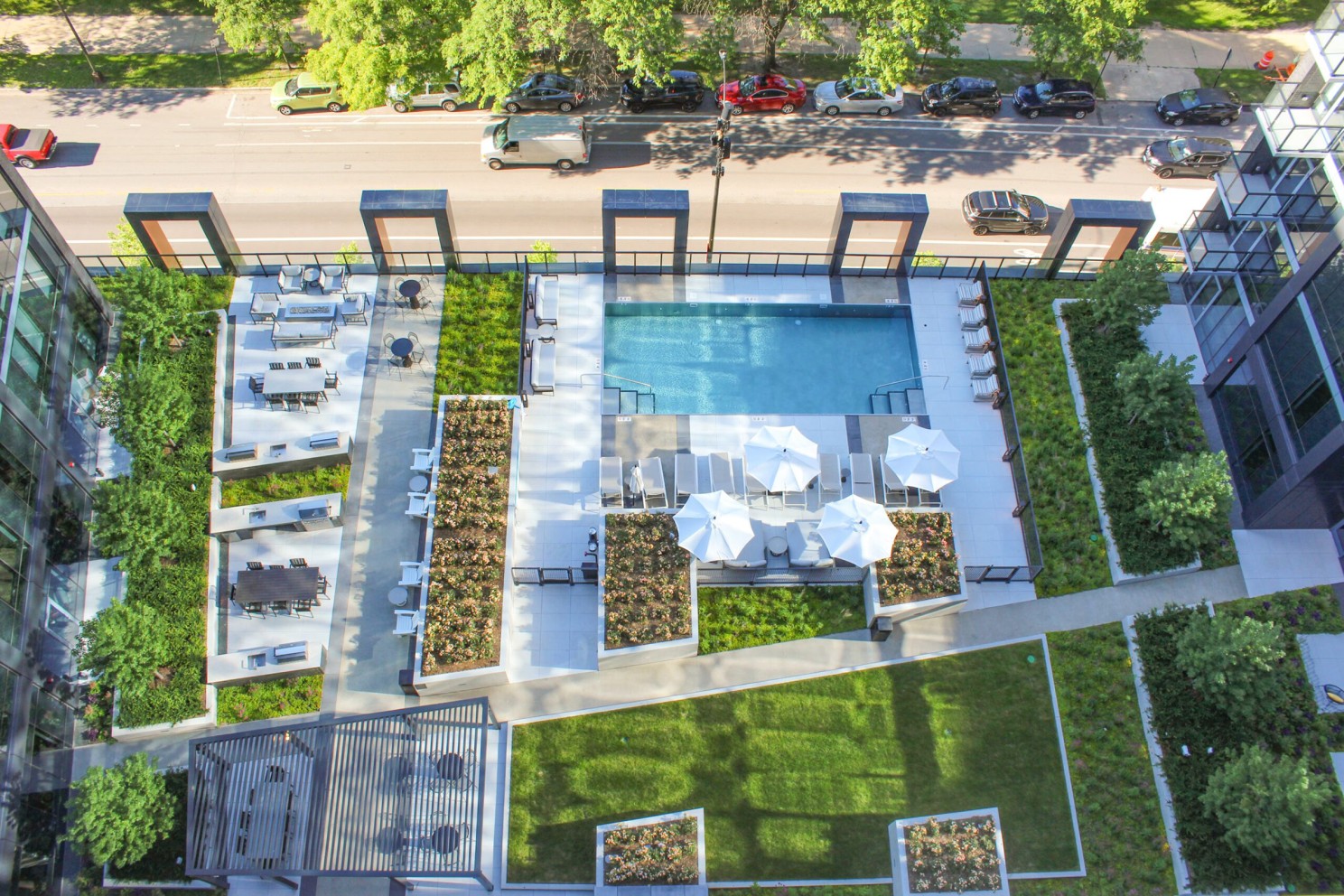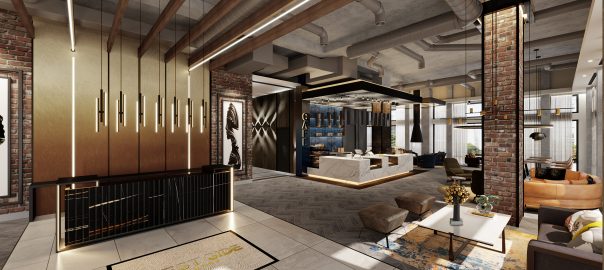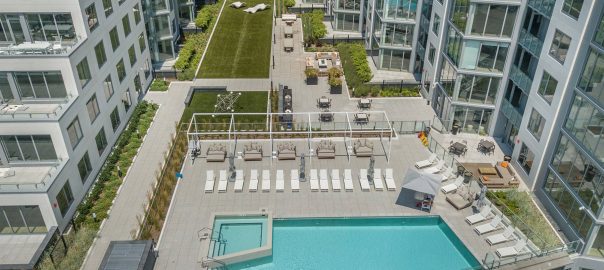At The Childs Dreyfus Group (CDG), we’ve been at the forefront of interior architecture for over 60 years, crafting spaces that not only reflect aesthetic excellence but also promote holistic well-being and environmental responsibility. As urban centers like Chicago, New York, and New Jersey continue to evolve, and emerging markets such as Atlanta, Dallas, and the Carolinas experience rapid growth, the demand for wellness-centric and sustainable multifamily living has never been more pronounced.
The Rise of Wellness-Oriented Living
The global wellness economy is projected to reach $8.5 trillion by 2027, underscoring a significant shift in consumer priorities towards health and well-being. This trend is reshaping the multifamily housing sector, with residents seeking environments that support physical health, mental clarity, and social connectivity. Transforming Cities
In response, CDG integrates wellness-focused amenities into our designs, such as:
• Full-Service Fitness Centers: Equipped with state-of-the-art equipment, yoga studios, and spaces for personal training.
• Quiet Spaces: Designated areas for meditation and relaxation, providing residents with peaceful retreats.
• Makerspaces: Creative hubs that encourage artistic expression and community engagement.
These features not only enhance the living experience but also foster a sense of community and belonging among residents. Times+8Multi-Housing News+8gb&d magazine+8
Embracing Biophilic Design
Biophilic design, which seeks to connect occupants with nature, is gaining traction in multifamily housing developments. Incorporating elements such as indoor plants, natural light, and green spaces, biophilic design fosters a sense of well-being and tranquility in urban environments.
At CDG, we prioritize biophilic elements by:Architectural Digest+9childsdreyfus.com+9Wikipedia+9
• Integrating Natural Materials: Utilizing wood, stone, and other organic materials to create a warm and inviting atmosphere.
• Maximizing Natural Light: Designing spaces that allow ample sunlight, reducing reliance on artificial lighting.
• Creating Green Spaces: Incorporating rooftop gardens, courtyards, and indoor plant installations to bring nature closer to residents.
These design choices not only enhance aesthetic appeal but also contribute to residents’ mental and physical health.Times Union+4Multi-Housing News+4gb&d magazine+4
Sustainability: A Core Design Principle
Sustainability is becoming increasingly important in multifamily design, with developers incorporating green building practices and environmentally friendly features into their projects. From energy-efficient appliances and solar panels to recycled materials and green roofs, multifamily buildings are striving to minimize their environmental footprint and promote a more sustainable way of living.
CDG’s commitment to sustainability is evident in our projects, such as the 4600 N. Marine Drive development in Chicago, which features: childsdreyfus.com
• Green Roofs: Reducing urban heat island effects and managing stormwater.
• EV Charging Stations: Supporting the transition to electric vehicles.
• Digital Transit Displays: Encouraging the use of public transportation.
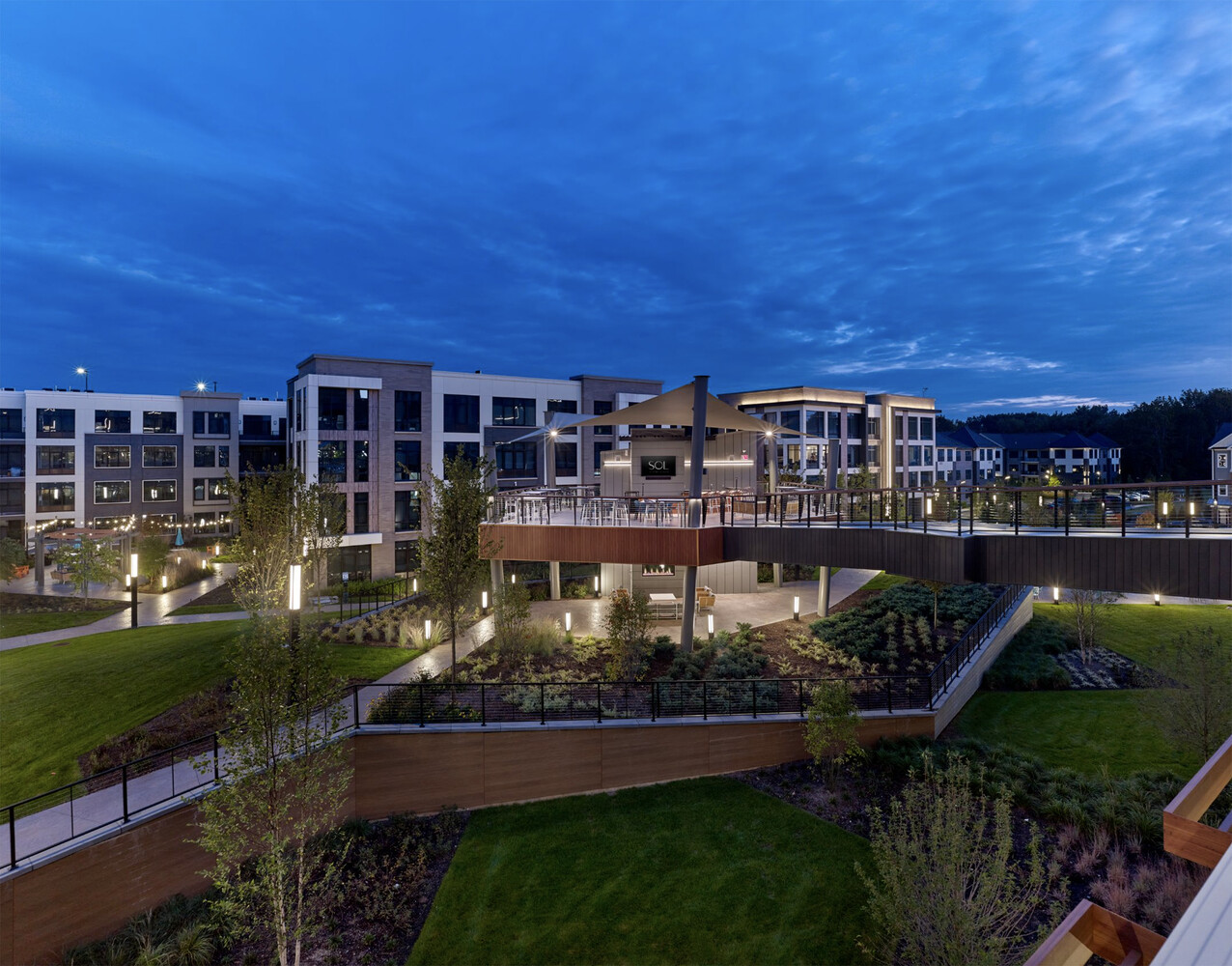
By integrating these sustainable features, we aim to create living spaces that are both environmentally responsible and economically beneficial for residents.
Adapting to Evolving Urban Landscapes
As cities like Atlanta, Dallas, and the Carolinas experience population growth, there’s an increasing need for multifamily housing that accommodates diverse lifestyles and preferences. CDG addresses this by designing flexible living spaces that can easily adapt to changing needs.
The Childs Dreyfus Group: Your Partner in Innovative Design
With a rich history rooted in Chicago and New Jersey, Atlanta, Dallas, and the Carolinas, The Childs Dreyfus Group is uniquely positioned to deliver interior design solutions that align with contemporary demands for wellness and sustainability.
Our expertise in interior architecture allows us to create spaces that are not only visually stunning but also enhance the quality of life for residents. By staying attuned to emerging trends and prioritizing the needs of modern urban dwellers, we continue to set the standard for multifamily living.
Ready to Transform Your Next Project? Partner with The Childs Dreyfus Group to bring your vision of wellness-oriented and sustainable multifamily living to life. Contact us today to learn how our innovative design solutions can elevate your development and meet the evolving needs of urban residents.


